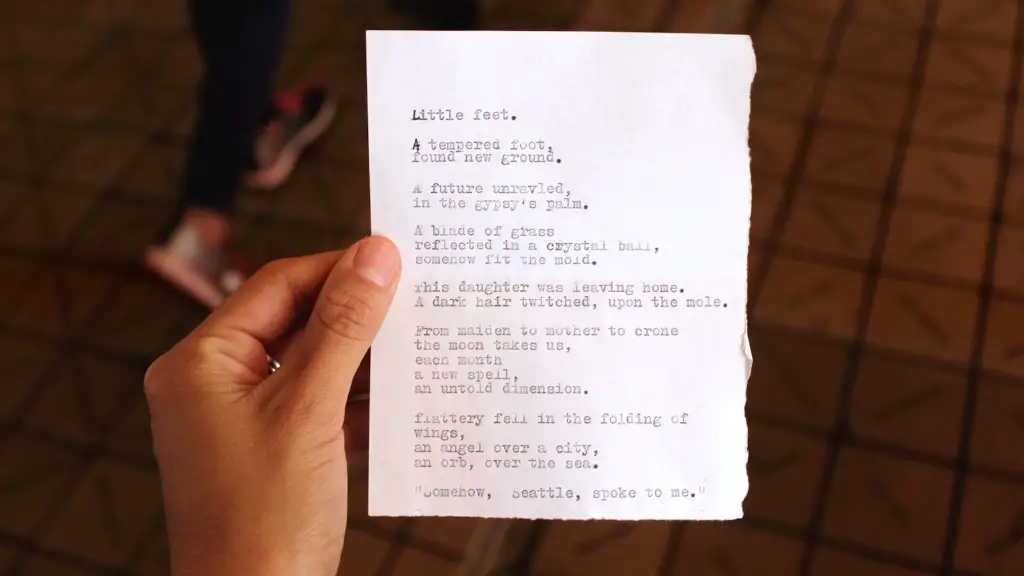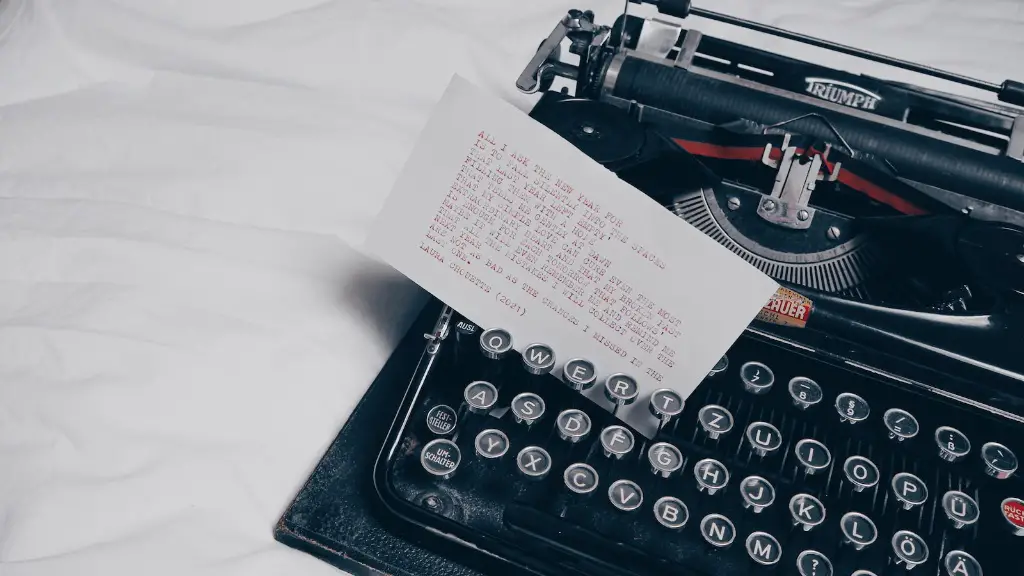Organizing Poetry by Theme
One of the easiest and most effective ways of organizing a poetry collection is by theme. As a starting point, it is helpful to identify the topics and subtopics related to your collection, from broad themes such as love, nature and war, to more specific ideas such as sunsets, childhood memories or current events. Once you have identified these primary themes, you can then begin to sort your poems into logical categories based on those themes. Many collections have a lot of flexibility when it comes to organization, though it is important to ensure that there is some type of unified structure to your collection.
Creating a Table of Contents
As you are sorting through your poetry collection, it is important to keep a running list of the poems and the respective themes, which you can use to create a table of contents. This will provide an easy reference guide to your collection and will be helpful if you ever need to locate specific poems within your collection. Additionally, a table of contents can also be useful for readers if, for example, they are looking for a specific kind of poem.
Organizing Poems Chronologically
Organizing a poetry collection chronologically is another popular option. To do this, divide your collection into subsections based on the timeline of when the poems were written. For example, if you have a collection that spans over a hundred years of poems, you would create subsections such as 19th century, 20th century, 21st century and so on. Within each subsection, you can further divide the poems according to the year they were written. This can be especially useful for collections that have some sort of narrative story arc that can be followed over time, especially those with a large body of poems.
Organizing Poetry by Genre
Organizing a poetry collection by genre is also popular, as it allows readers to quickly access specific poems based on the type of poetry they are looking for. Popular genres such as sonnets, haikus, ballads, and free-verse can all be easily found within this kind of organization. Additionally, it is also possible to further subdivide the different types of poetry based upon additional criteria, such as culture or era.
Contextualizing Poems
When organizing a poetry collection, one may also want to think beyond just the poems themselves. Contextualized information can be helpful for readers, such as providing biographical information on the poet or more detailed background information related to the poem. This can help to provide insight into the poem, which can then be used to gain a better understanding of it. Additionally, as a curator, one may also want to add their own insights and analysis into the poems, which will provide further context for the reader.
Utilizing Technology
In addition to traditional methods of organizing a poetry collection, there are also some technology-based methods that might be worth exploring. Many software programs, such as Evernote, allow for easy organization and categorization of documents and can be used to create a digital poetry collection. Additionally, there are also a number of digital poetry archives and databases, such as Poetry.org, that can be used to store and organize poetry.
Preserving Your Collection
It is important to make sure that your collection is well-preserved and stored properly. Initially, one should store the collection in an easily accessible location, such as a bookshelf. This will allow one to access the collection quickly and easily when needed. Additionally, it is also important to consider how the collection will be preserved over time. Archival quality materials, such as acid-free paper and lignin-free boards should be considered when storing the collection.
Organizing Poetry by Tone or Mood
An interesting way to organize a poetry collection is by tone or mood. This type of organization allows for a different perspective on the poems, as it looks at the varying psychological and emotional states of the poems themselves. By organizing a collection in this manner, one can get a clearer idea of the central ideas and overarching themes that run through the collection as a whole.
Organizing Poetry by Poet
Organizing a poetry collection by poet is an effective way of identifying different authors and the individual bodies of work that make up the collection. This type of organization can be helpful for those looking to become familiar with a certain poet’s canon of work, as it allows one to quickly access the author’s complete body of work. Additionally, this type of organization can be beneficial for those who have multiple collections from the same poet and wish to have them organized in one place.
Equipment for Preservation
When preserving a poetry collection, it is important to consider the types of equipment and materials that will be necessary. Firstly, one should consider the type of paper that will be used to store the collection, which should be an acid-free paper that is both durable and archival. Additionally, it is also important to consider the type of binders and folders that will be used to store and contain the collection. When choosing these supplies, it is important to look for those that are made of acid-free, lignin-free materials.
Display Options
As a curator of a poetry collection, one may also want to consider display options that will help to show off the collection. Matting and framing add a sense of formality and importance to the collection and can be an effective way of displaying poems. Additionally, there are also a number of digital display options, such as multimedia displays or interactive displays, that can be used to make the collection more engaging for the reader.
Marketing Strategies
In order to make sure that your poetry collection reaches a wider audience, it is essential to employ marketing strategies. Digital marketing, such as social media campaigns, can help to increase visibility and reach. Additionally, traditional marketing methods, such as physical flyers or print advertisements can also be beneficial. Additionally, it is also important to consider the type of venues where the collection could be showcased, such as bookstores, galleries and libraries.
Networking Options
When looking to expand the reach of your poetry collection, it is important to identify key networks and organizations that might be useful. One should join and participate in online communities that are specifically geared towards curation and preservation of poetry collections. Additionally, one should also consider joining local poetry societies or organizations as well as reaching out to press and media outlets that might be interested in featuring the collection.
Organizing Poetry by Format
An additional way of organizing a poetry collection is by looking at the different types of formats that the poems are in. This could include traditional formats, such as those seen in print books and collections, as well as digital formats, such as those used for eBooks or audiobooks. By organizing the poems in this manner, one can quickly access specific types of works, such as physical books or digital audio files.
Selling & Promoting Your Collection
Once you have completed organizing your poetry collection, it is time to start selling and promoting your work. In order to do this, one should look into online marketplaces, such as Amazon and Etsy, where one can list and sell the collection. Additionally, one should also reach out to local bookstores and libraries to see if they would be interested in stocking the collection. Additionally, it is also important to promote the collection on social media and other digital outlets, in order to maximize its reach.



